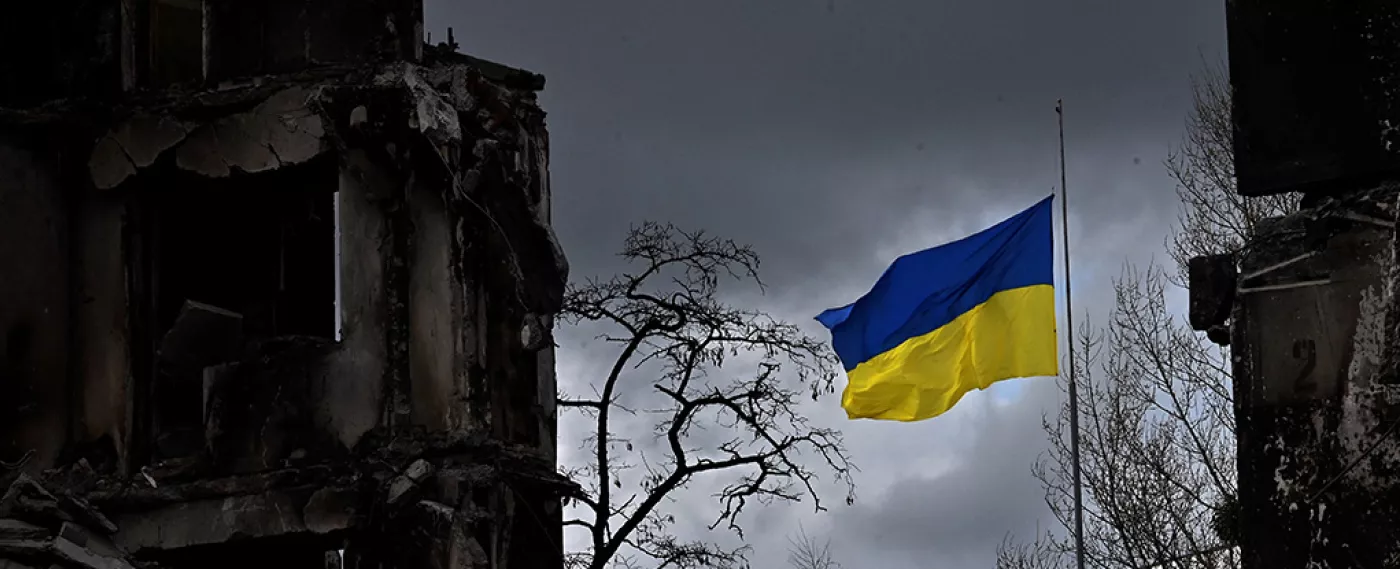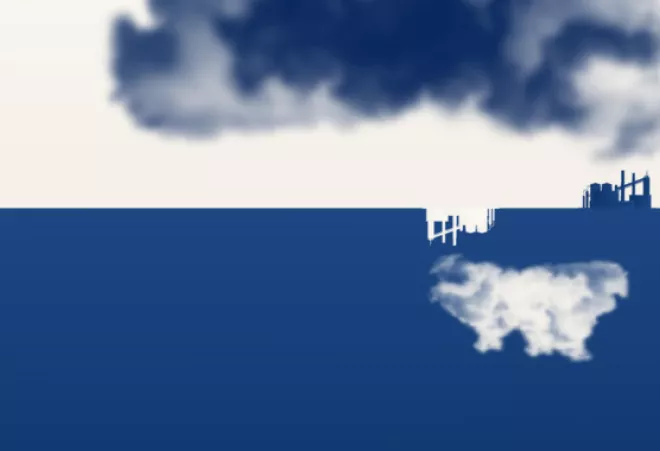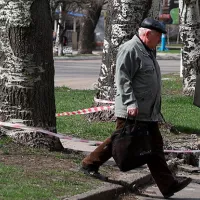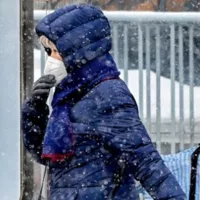- Home
- Expressions by Montaigne
- Ukraine: Five Scenarios For the Coming Months


Several weeks ago, we covered the evolution of possible scenarios on the war in Ukraine. The range of these remains quite broad, but it has narrowed.
It is now almost certain that the Russian "statocidal" project — one which denies Ukrainian statehood and will only recognize Ukraine within Russia’s natural sphere of influence — will not succeed. Some hypotheses that were left out of coverage now deserve to be examined. These five scenarios will be referred to as "Karabakh", "Kashmir", "Crimea", "Croatia", and "Kosovo".
Stalemate: the "Karabakh" scenario
The first scenario is that of a stalemate over several months, perhaps even years. In southern Ukraine, the Russian military is already consolidating its gains. A war of "positions" rather than one of "movement" could ensue, in which the use of artillery would become more useful than tanks, punctuated by non-decisive offensives. Moscow's line of argument is clear. As the editor-in-chief of Russian state media RT Margarita Simonyan declared on television at the end of May, if the Russian forces encounter difficulties, it is because they are holding back their blows so as not to destroy territories and local populations... But this scenario in which Russia would keep its country in a state of war and wait for fatigue to overcome the West is not a bad one for Putin. Russia would have already won by putting the occupied regions under its control for a long time, with all its economic and demographic benefits resulting from it. The people of the southern Ukrainian districts of Kherson and Zaporizhzhia have already been offered Russian citizenship since the end of May via an accelerated procedure, as has been the case for Donbass residents since 2019... This scenario would be reminiscent of the Nagorno-Karabakh war between 1994 and 2020.
Return to the status quo ante: the "Kashmir" scenario
A lasting stalemate – a "test of weakness", or as U.S. expert Eliot Cohen calls it, a "competitive collapse" – could ultimately lead, after Russian troops’ retreat to initial positions, on an agreed return to the status quo ante.
A lasting stalemate – a "test of weakness" [...] could ultimately lead, after Russian troops’ retreat to initial positions, on an agreed return to the status quo ante.
This return to square one was suggested by Henry Kissinger in Davos at the end of May as a possible negotiation optimum. One might as well say that the former US Secretary of State has not exactly made friends in Ukraine. As a former U.S. official pointed out, this proposition is in fact exactly what he proposed… in 1973: a return to the status quo ante provided that the parties agree to the principles of UN Security Council Resolution 242, which enshrined the right of each state to live within secure and recognized borders and emphasized the inadmissibility of territorial acquisition by force.
It was on these very foundations that the Camp David peace process was initiated, with Egypt recognizing Israel's existence, Amman abandoning its territorial claims on the West Bank annexed in 1950, and peace with Jordan. If Ukraine were to face a potential collapse of its army or even of its statehood, such an outcome would not be unreasonable and would constitute the "bare minimum acceptable" for Kyiv. This return to the status quo ante bears resemblance to the outcome of the 1965 Indo-Pakistani war over Kashmir, hence the “Kashmir” scenario.
Russian Conquest: the "Crimea" scenario
In a third scheme, Moscow would successfully conquer the whole of "New Russia'', from the Donbass to the west of Crimea, and consolidate its positions. This would come at a high cost. Russia would then offer a cease-fire conditioned by a so-called "territorial compromise" in Kyiv. Mr. Putin could only do this if, at the very least, the army controlled the whole of the two self-proclaimed Donbass republics (which was not the case before February 24). Moreover, if Russia were to annex either of these regions, as it did with Crimea in 2014, any Western-backed Ukrainian offensive from Moscow's point of view would then become an "attack on Russian territory". This scenario remains unlikely as long as Ukrainian resistance capacity exceeds Russia's human and material mobilization capacity ashas been the case since February 24. And if it were to happen, case studies from Cyprus, the Middle East, South Asia or the Korean peninsula do not suggest that it would guarantee stability.
Ukrainian Reconquest: the "Croatia" scenario
This is why by all means, the scenario which would see the progressive material and moral collapse of the Russian army remains most likely. As a French expert Philippe Gros reminds us, "this war is that of an expeditionary ground force against a nation in arms that has declared general mobilization. Their ability to replace men, or even just relieve them to rest, is not the same".
As of the end of May, Moscow had already lowered the enlistment age to 60 at the end of May... So far, the thousands of Russian soldiers who died in combat are mainly from rural areas of the Caucasus and Siberia. What if the urban population is also affected and deaths are rendered more visible? Moreover, the impact of the sanctions will not only affect the economy but also, and perhaps most of all, the ability to rapidly replace military equipment. Meanwhile, heavy armament such as the American M777 and French Caesar self-propelled howitzers are being delivered in large numbers.
The scenario which would see the progressive material and moral collapse of the Russian army remains most likely.
Could this lead to Ukraine one day launching a lightning operation to reconquer its territory, as Croatia did in the summer of 1995 ("Operation Storm")? In this fourth hypothesis, many allied countries would likely refuse to assist Ukraine in a reconquest operation aimed at "attacking Russian territory". This time, there would be a risk of escalation and a real nuclear threat. The same question would of course arise if other regions (Kherson, Zaporizhzhia, Donbass) were annexed by Moscow before then.
Compromise: the "Kosovo" scenario
In our fifth scenario the Donbass - in this case not annexed - would be recovered, but Crimea would remain in Russian hands. A loss of sacred land for Ukraine, just as Kosovo was for Serbia. The difference is that while Serbia seems to have abandoned any desire for Albanian-speaking lands, Ukrainian irredentism could develop to the point where the peninsula becomes a sort of Alsace-Lorraine, to be reconquered one day. Thus, this "land for peace" endgame, to use the Middle Eastern metaphor, would only be truly realistic if NATO countries - led by the US - agreed to compensate for the loss of Crimea and the recognition of Russian sovereignty over the territory with a guarantee of security given to Ukraine within its new borders. At the price of a blessing, in effect, of Russia's transgression of European norms on the non-modification of borders by force.
Copyright: Sergei SUPINSKY / AFP





